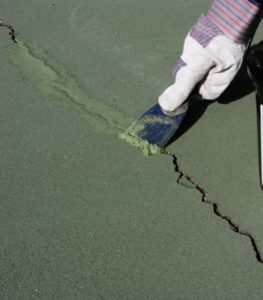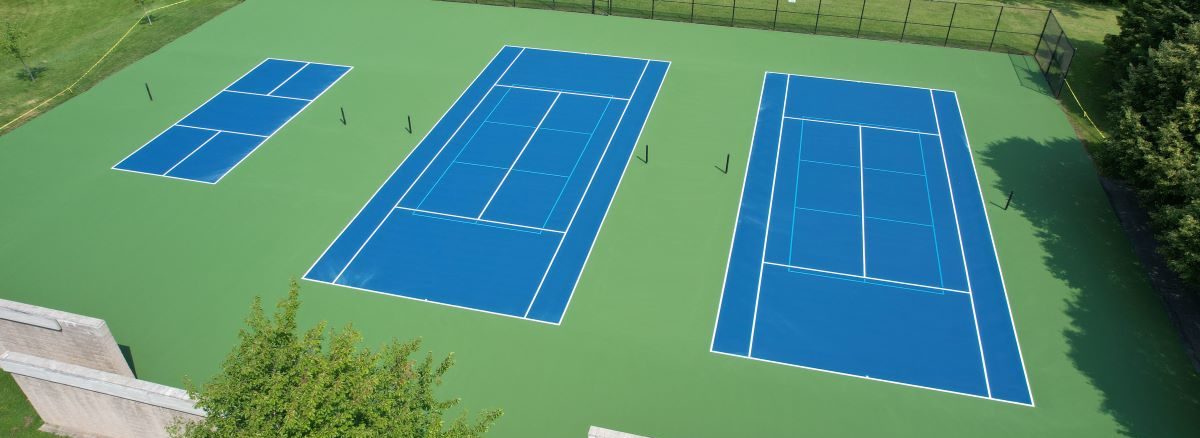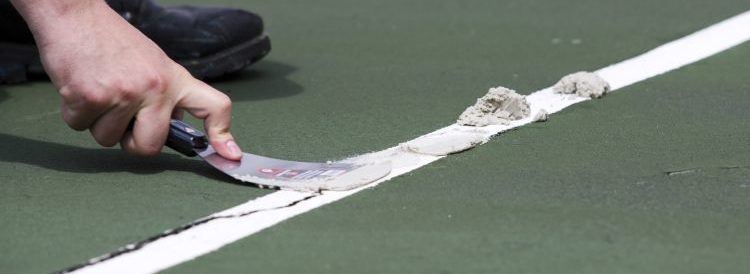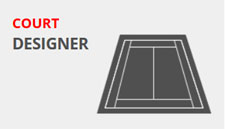Tennis Court Crack Repair | Central & Western NY
One of the most common issues we face when resurfacing tennis and other sports courts is crack repair. Even though we refer to it most commonly as tennis court crack repair, we also repair cracks on:
- Pickleball courts
- Basketball courts
- Game courts & color coated playgrounds
- Asphalt and concrete athletic & recreational surfaces
Why do tennis courts crack?
Hard tennis courts are built with asphalt or concrete. The most common material used in New York is asphalt. Even though asphalt is considered a flexible pavement, there are still quite a few variables that contribute to cracking:
- Improper construction (i.e. not built per ASBA – American Sports Builders Association standards)
- Inadequate preparation of grade/subgrade before paving or expansive soil.
- Issues with compaction, air voids, drainage & slope, low asphalt cement content, etc.
- Aging asphalt – the asphalt binder oxidizes and the slab becomes brittle
- Weather – Freeze-thaw cycles and temperature swings in New York is tough on pavement
- Lack of tennis court maintenance and crack sealing can let water flow into the base, speeding up degradation and the size of cracks.
- Reflective cracks can come back through from previous slabs if overlayed
- Cracks can form with pressure and movement from net post or fence post footers
Tennis court crack repair methods
We utilize several methods and materials when making repairs to tennis & sports court cracking. Some methods are considered long-term and others short-term. Traditional acrylic crack fillers are used to seal off the cracks and minimize water intrusion. They are applied during the resurfacing process, but can also be used between resurfacing cycles to reseal cracks that have opened up from slab movement.
The Riteway Crack Repair System is our best, long-term crack repair system. This is a series of specialized fabric layers, adhered to the surface by acrylic binders. We start by filling the cracks with a compound of acrylic patch binder, portland cement, and silica sand. After the crack filler has dried, we install a series of fabric and fiberglass membranes. These membranes are adhered by a blend of elastomeric acrylic binders to provide a strong and flexible bond.
There are also ready-to-use acrylic crack fillers that can be used to maintain the cracks. Common types include sand-filled trowel-grade, pourable elastomeric, and rubberized acrylic crack sealants.
How long will tennis court crack repair last?
Each court is unique and in a different point of its own life cycle. Variables that can affect how long the crack repair will last include:
- Age and condition of the asphalt pavement & base materials
- Type of crack repair method used
- Weather patterns
Generally, cracks that are filled with acrylic crack sealants can open back up when the next bit of cold weather hits. It may only start with a hairline, or the sealant may let go from one side of the crack as it opens. It may even appear to be open during cooler parts of the day and closed when it warms up. This is normal and expected with these materials.
Contact us and we can provide you with a quote for various crack repair methods & make recommendations, depending on your budget.
- Tennis Court Construction
- Basketball Court Construction
- Tennis Court Resurfacing
- Basketball Court Resurfacing
- Tennis Court Repair
- RiteWay Crack Repair System
- Hand striping
- Power Washing
- Providing ongoing preventative maintenance programs throughout Rochester & Western NY
- Midtown Athletic Club
- Tennis Club of Rochester
- Mendon Racquet Club
- McQuaid Jesuit
- The Harley School
- Country Club of Rochester
- St. John Fisher College
- Nazareth


Servicing Rochester, Syracuse, Utica, Buffalo, and all surrounding areas of Western and Central New York and the Southern Tier
© 2022 Super Seal Sealcoating Company. All rights reserved.
Website development and hosting by IDS Consulting




Follow Us!